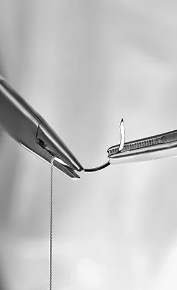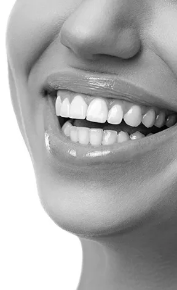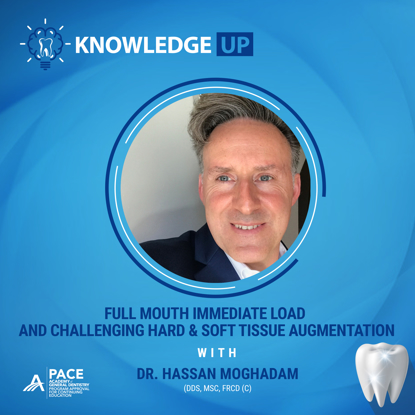Products tagged with 'implant webinar'
Improve bone defect repair
Join HANSAmed and Dr. Zeeshan Sheikh as we discuss Innovation and predictability, improve bone defect repair using Geistlich Bio-Oss® granules! The current long list of available natural and/or synthetic materials and surgical techniques makes the decision-making challenging with regards to what graft materials and surgical approach to use in oral surgery.
Full mouth immediate load and challenging hard & soft tissue augmentation
Full mouth immediate load will be discussed from a unique prospective. The patients perspective . Testimonials from 2 weeks after to 8 years after treatment will be shown. We will look at the long term failures and what we have learned over the last 10 years, is it acceptable to treat everyone with one paint brush? We will demonstrate both surgical and prosthetic techniques using the latest treatment options available in immediate load. We will also look at some common errors and causes of failure both in the short term and long term. Surgical augmentation both hard tissue and soft tissue will be shown, that are used to correct these failures. Finally we will conclude that there is another option, a hybrid option that has better long term success both from the patients perspective and clinical perspective.
Shifting Paradigms in Oral Soft Tissue Regeneration
Learn about the increased momentum of using soft tissue grafting procedures at dental implant sites in the last 5 years with Dr. Daniel Thoma.
Soft tissue grafting procedures at dental implant sites gained momentum in the last 5 years. This is due to a more profound understanding that an optimization of soft tissue quality and quantity does not only enhance esthetics but is also critical for the maintenance of peri-implant health. Whereas autogenous grafts are still considered to be the gold standard, more recent scientific evidence hints into the direction of soft tissue substitutes. Soft tissue substitutes are not replacing autogenous grafts, but rather serve as an alternative with a major benefit of decreasing patient morbidity.
Reducing Risks in Implant Therapies
This webinar with Dr. Ronald Jung will provide a comprehensive overview of the important steps needed to reduce risks from planning to tooth extraction and implant placement with bone regeneration.
The aim of the lecture is to provide a comprehensive overview of the important steps needed to reduce risks from planning to tooth extraction and implant placement with bone regeneration.
Based on clinical complications and wrong decisions the lecture will present how to make the right decisions for handling of extraction sockets, alveolar ridge preservation and soft and hard tissue regeneration in esthetic implant therapy. The lecture will focus on how to improve implant dentistry in order to reduce the invasiveness of the therapy and will give you a lot of practical information for your daily practice.
Ridge Preservation, Extration Socket Management
This webinar with Dr. Michael Glogauer will focus on the current gold standard for preserving alveolar bone at the time of extraction in order to optimize long-term implants therapy success.
This is Part 1 of a 2-part series with Dr. Glogauer. In order for implant therapy to be successful there is a need for adequate host bone in the proper position in three dimensions. However, the alveolar ridge is prone to resorption following extraction of teeth which results in inadequate bone volume and unfavorable alveolar ridge architecture which ultimately limits the successful placement of dental implants. Although immediate placement of dental implants is a successful form of therapy, it has been reported that implants do not adequately preserve the alveolar ridge. In this presentation we will focus on the current gold standard for preserving alveolar bone at the time of extraction in order to optimize long-term implants therapy success.
Clinical Benefits of Electric Rotary Surgical Equipment in Implant and Oral Surgery Procedures
You have taken the courses, you have the knowledge and the equipment to place Implants and perform various Oral Surgery procedures. Are you using your electric Surgical “Implant” motor to its full extent? Join us to review the W&H Implantmed Plus Surgical motor system and the various surgical handpieces that can help you in your practice – every day. Experience greater cutting power and reduced aerosol with the use of sterile irrigation along with handpieces that can be taken apart for optimal cleaning, longevity and reduced repair bills.
Untold stories of reaching esthetic successful results
This webinar with Dr. Daniele Cardaropoli will focus on the concept of soft-tissue integration in implant dentistry. From immediate implant placement to ridge preservation, the use of connective tissue graft as well as the use of tridimensional collagen matrix, together with the description of a novel volume-stable cross-linked matrix will be assessed.
Why soft tissues are the key point when dealing with esthetics in implant dentistry? What is their biological role? Why pink esthetics, intended as the proper relationship between the implant fixture and the supported crown, is so important for the final outcome of the therapy? The concept of soft-tissue integration is the new challenge in implant dentistry. The knowledge about the dynamics of healing in post-extraction sites recommends to avoid a staged approach with spontaneous healing after tooth extraction. To achieve an optimal result clinicians should consider to preserve the anatomy of the ridge and the soft tissue contour. During this lecture different surgical and prosthetic approaches will be discussed for single tooth and multiple teeth rehabilitations. From immediate implant placement to ridge preservation, the use of connective tissue graft as well as the use of tridimensional collagen matrix, together with the description of a novel volume-stable cross-linked matrix will be assessed. Different sites, different protocols, one goal: predictability.















